Convector or radiator. features of oil heaters. use options
In the process of choosing a heating system for a house, one of the main tasks is to determine the type of devices that will be used to heat the premises. First of all, all types of heaters are divided according to the principle of their work on radiators and convectors. About them and will be discussed further in this article, from which you will learn their differences between themselves, technical features and rules of placement.
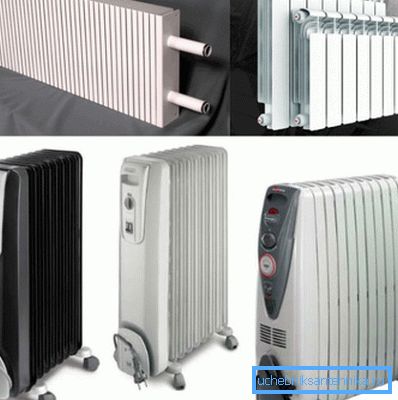
The main difference
So, how does a radiator differ from a convector:
- The radiator is a device with a coolant circulating inside.. In this case, the heat transfer to the room is carried out using thermal radiation from the surface of the device.
- If we are talking about a convector, its principle of operation is laid down in the very name. In this case, the difference between the convector and the radiator is that for heating, the phenomenon of convection is used, in which due to natural circulation the air heats up when passing through the heater.
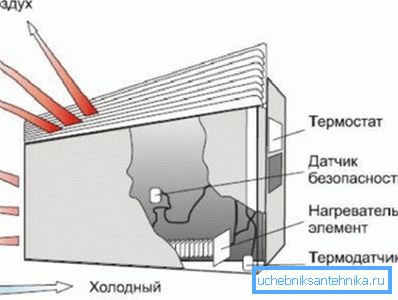
Heating radiators
- The most popular type of heating devices, installed in most apartments and in many private houses.
- Originally, the main material used for the manufacture of radiators was cast iron.
- Possessing enhanced corrosion resistance and a relatively low price, the cast iron battery has a long period of operation and has been the main source of heat in high-rise buildings.
- Currently, aluminum and bimetallic aluminum radiators have replaced the cast-iron radiators, combining not only an attractive appearance and quality, but also high technological characteristics.
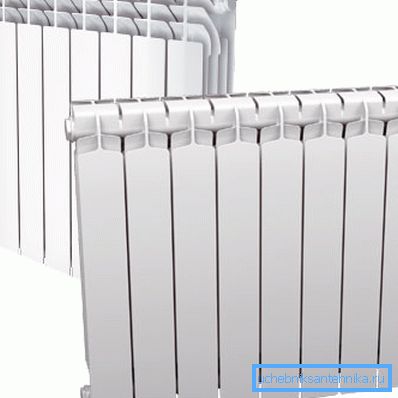
In the form of manufacture, the device can be:
| Tubular | Heating devices of this type do not have good technical characteristics. Their main advantage can be considered the possibility of installation not only for the purpose of heating the room, but also as an object of design that blends harmoniously with the most diverse interiors. |
| Panel | They represent a panel consisting of hermetic metal plates, inside of which the coolant circulates, which heats the case. |
| Sectional |
|
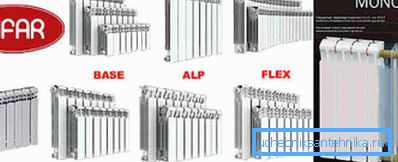
Oil heaters
Separately, I want to say about the oil radiators, which are characterized by high mobility due to the lack of connection to the heating network. Their main advantage is the ability to install anywhere in the room with their own hands, as well as the ease of moving from one place to another.
Of the benefits, you can also add:
- the presence in some models of the temperature sensor that allows you to maintain a certain temperature in the room;
- a timer capable of turning the device on at a specific time.
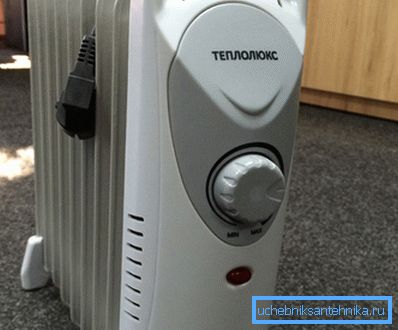
But, despite all the advantages of devices and comfort in use, they have high energy consumption, as well as a long period necessary to heat the room.
Advice: it is best to use “oil springs” where heating is not needed on a permanent basis.
Convectors
This type of heating device is made of copper or steel and can be external, mounted on the wall, as well as built-in, mounted along the walls or floor. Structurally, they are:
| Electric | The main advantages are noiselessness, low price, ease of installation, high efficiency. |
| Gas powered |
|
| Water | Coolant in such devices is water. They are characterized by excellent heat transfer, radiating heat even at relatively low temperatures of the working fluid. The minus can be considered a large amount of water consumed. |
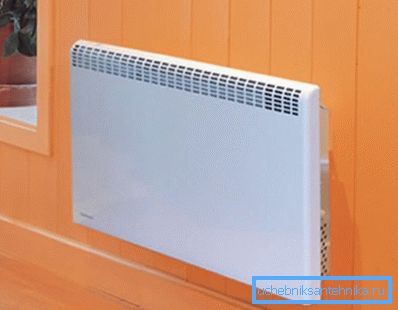
Tip: make extensive use of devices when building autonomous heating systems, in particular when disconnected from a centralized network.
Use cases
- When creating heating systems, convectors can be used both as the main device for space heating and as an auxiliary, especially in those places where the installation of classic radiators is impossible. For example, the device built into the floor has proven itself when installing it along glass walls or in the opening of sliding doors.
- An electric convector is also well used as a substitute for an oil radiator. With a long service life, small size, light weight and a pleasant design of the device, the room is heated much faster, which is better for people who are there. Accordingly, lower energy costs to create a comfortable temperature.
- Another indisputable advantage of an electric convector is the possibility of its use in rooms with small children. This happens because of the lower temperature of the device as compared to oil heaters.
Select device type
Definitely can not say that it is better to use these two devices.
The option is required to choose from taking into account the characteristics of the room, location and many other factors.
- If, when choosing a device, it is necessary to keep within certain dimensions, a convector will be suitable for a more compact size, which is also preferable for security reasons. The temperature of the case is lower and it is impossible to get thermal damage during operation. Convectors are used and, if necessary, embedding the heater in the floor or wall. The negative property of convectors is the higher cost of the device.
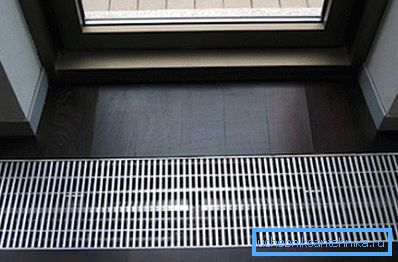
- When it comes to use for central heating systems, radiators are preferable and are able to provide uniform and rapid heating of the room, for which the convector may not have enough power reserve. During operation, cleaning of dust is also much easier for radiators than for convectors, due to the simpler and more accessible design of the device. A significant advantage of radiators is higher heat transfer and, consequently, greater efficiency. Installation instructions for oil radiators are simple.
Conclusion
The main thing when choosing convectors or radiators for space heating is taking into account the location of the heating device, the presence of connection to the network of central heating. Equally important are the cost of the device and its safety in the operation in case of children in the room. The video in this article will allow you to find additional information on the above topic.